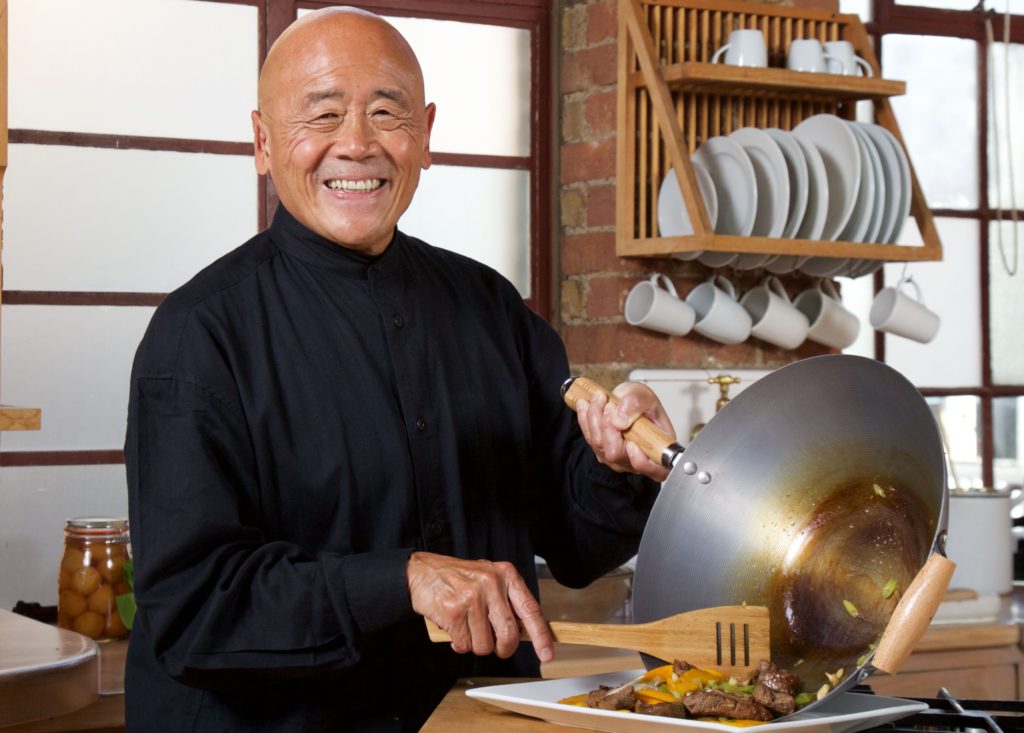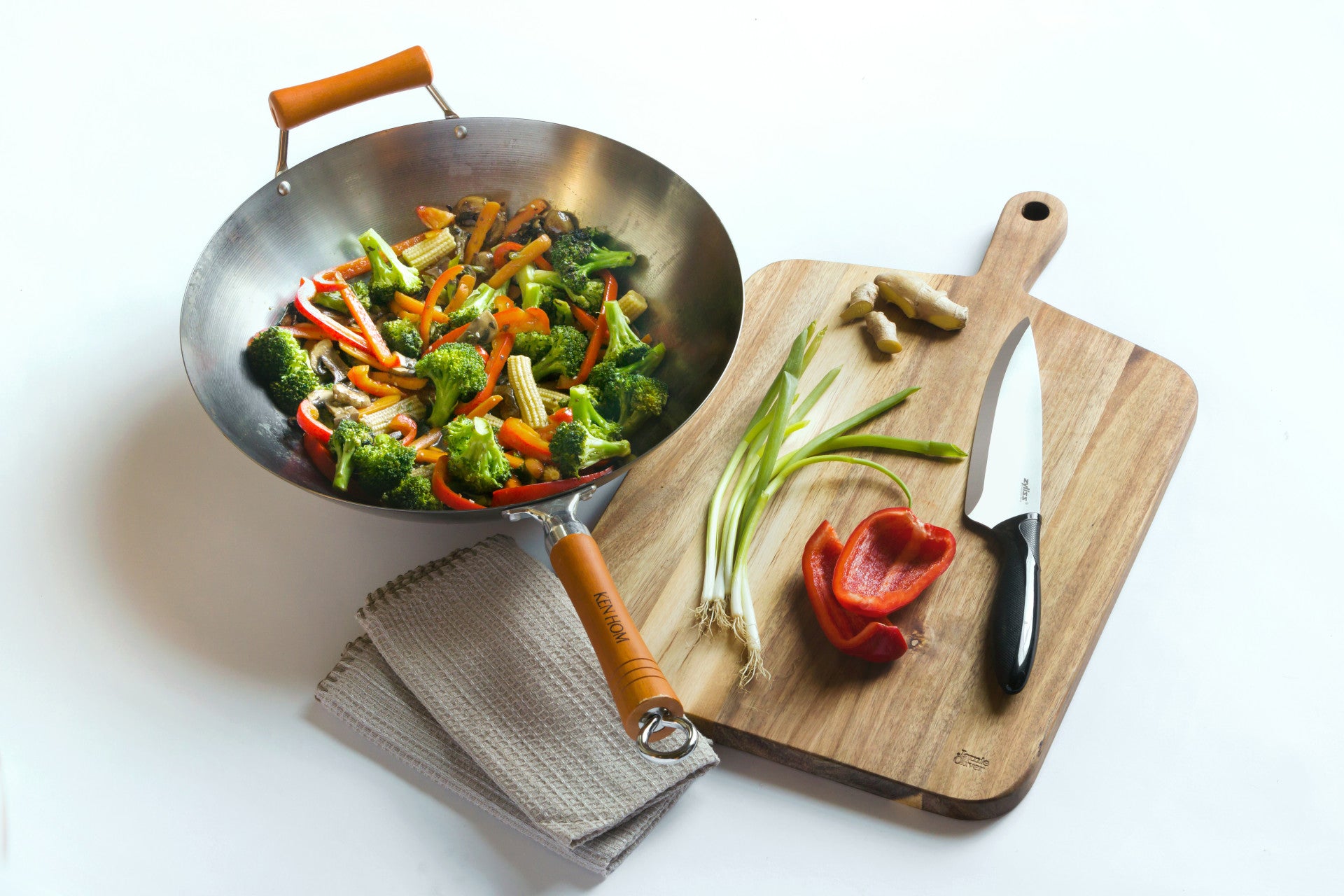
One of the most versatile cookware in the kitchen, the wok is definitely a must-have for the chef who loves Asian cuisine. More than just for stir frying, this humble wok can also be used for steaming, pan frying, deep frying, searing, poaching, boiling, braising, and even smoking food to perfection. In this respect, the all-rounder wok could possibly be the only cookware you'll need in the kitchen!
For our food endeavours, we love using the high quality and beautiful woks developed by the master of Asian cuisine himself - Ken Hom OBE. Lightweight, durable with superior cooking performance, Ken Hom woks are the cookware choice for many home chefs and professionals. Our favourites from the brand are their carbon steel woks as they heat up quickly and consistently to deliver delicious results with the signature “wok taste” effortlessly. These woks are also lightweight, durable, and easy to maintain, perfect for cooking fantastic dishes without much of a fuss.
Non-stick or Non-coated?
Ken Hom carbon steel woks are available with non-stick coating and without. The non-stick woks from the brand are great for cooking at high temperatures without releasing toxic fumes. However, when it comes to using a wok, although the non-stick offerings are a convenient option, uncoated carbon steel woks are undoubtedly still the best choice thanks to their ability to enhance the natural flavours of your food ingredients while remaining incredibly durable. Of course, you'll want to make sure you're getting the best out of your uncoated wok by seasoning it first!
How do I Season My Wok?
It’s crucial to season your non-coated wok to ensure an easy release of your food. Read on below to find out Ken Hom's seasoning technique for long-lasting non-stick coating, and tips on keeping your wok in tip-top condition.
Before using your new Ken Hom wok for the first time, it’s important to scour it with detergent and a scouring pad. Why? You'll want to remove the machine oil that was used to coat the wok during the manufacturing process to prevent it from rusting.
After scouring your wok, heat it and add a coating of oil to the surface. To do this, simply pour some oil into your wok and spread it all over the surface of the wok using a kitchen paper towel.
If your paper towel starts to get dark as you wipe, that’s okay. Let the oil heat on the wok for a few minutes and don’t be alarmed if the oil starts to smoke. As the oil incorporates into the wok, brown spots will start to appear on your wok. This is a good sign that your wok is well seasoned.
How Do I Maintain My Wok After Seasoning?

Once your coating is on, never ever scour your wok again unless it rusts. If it rusts, simply go through the same seasoning procedure again as detailed above. Additionally, if you're not going to use your wok for a long time, all you need to do is put a film of cooking oil over it before storing it away.
As a general rule, never clean your wok in a dishwasher. Always wash your wok with a soft sponge, and as you cook with it, you will see how beautifully the natural coating will prevent food from sticking. This is the professional way of cooking with a wok.
Next Read: Mango Beef Stir Fry Recipe with Ken Hom


